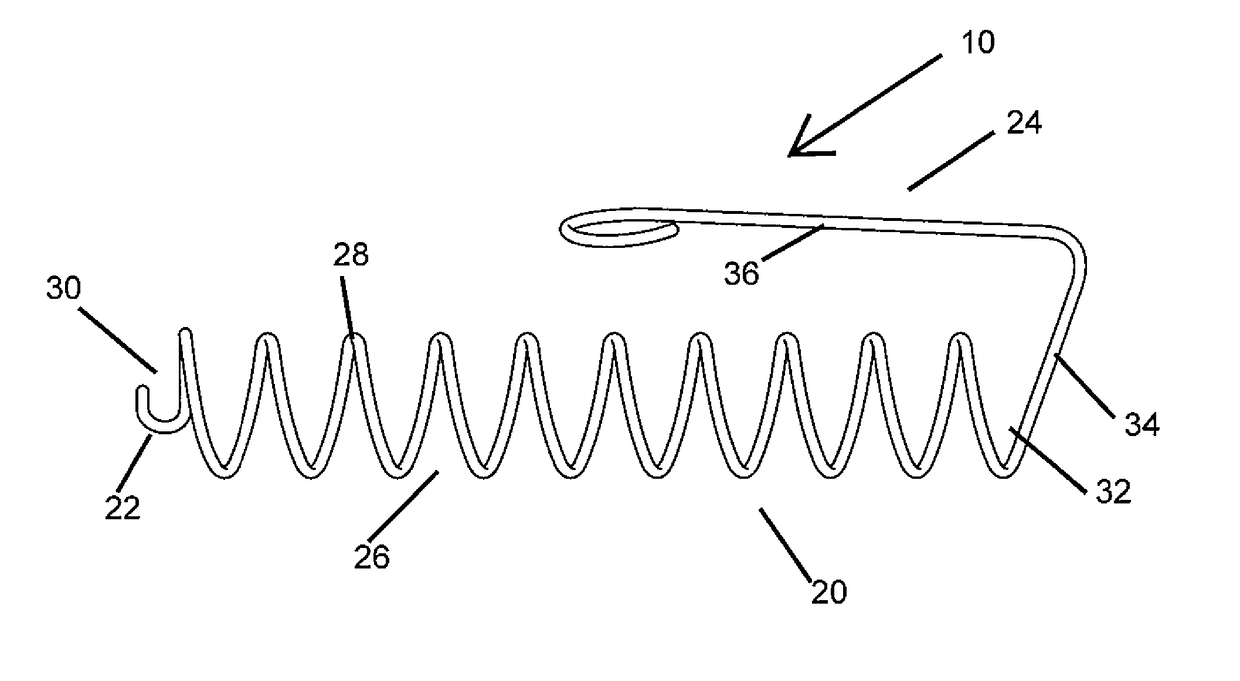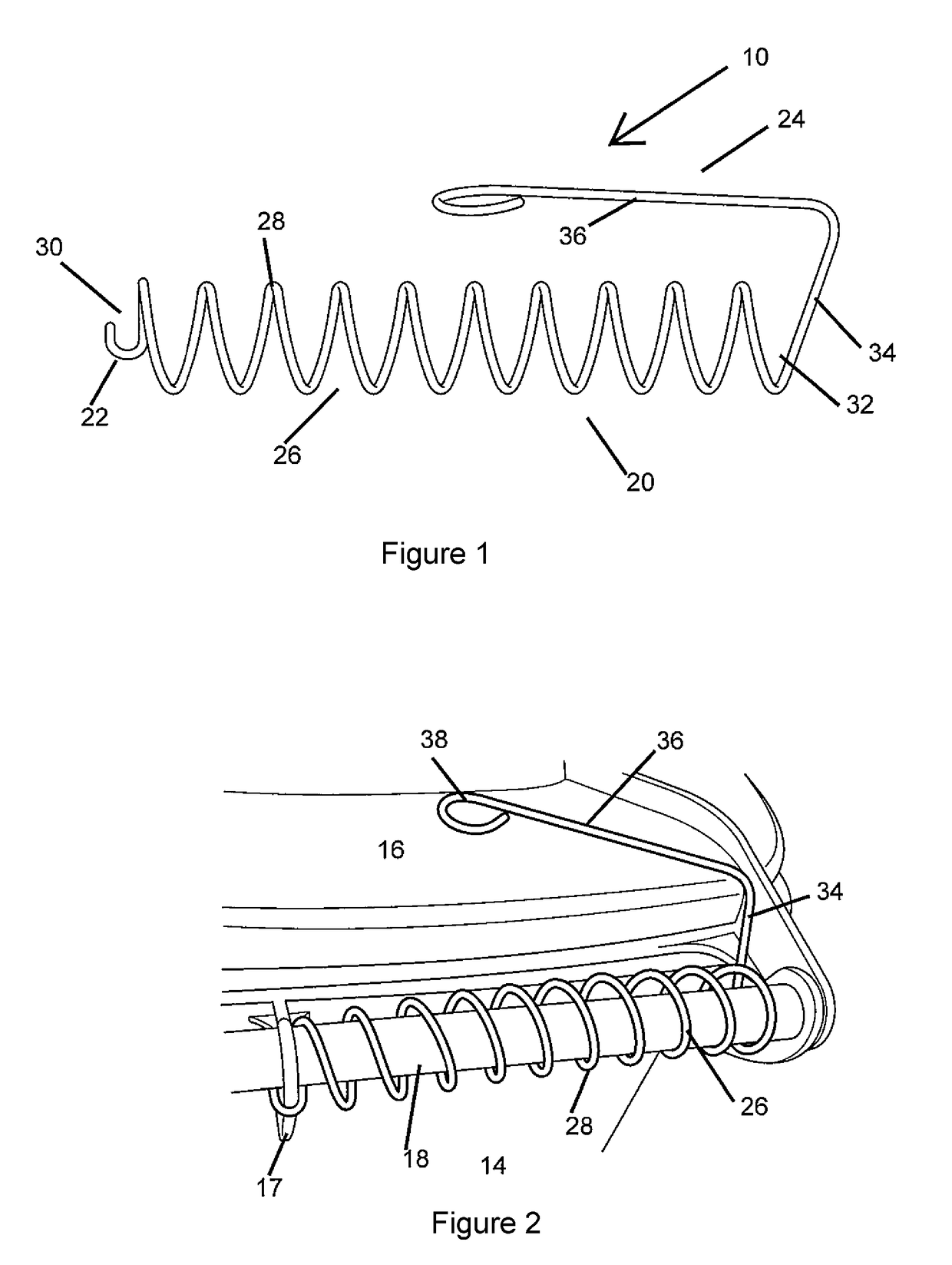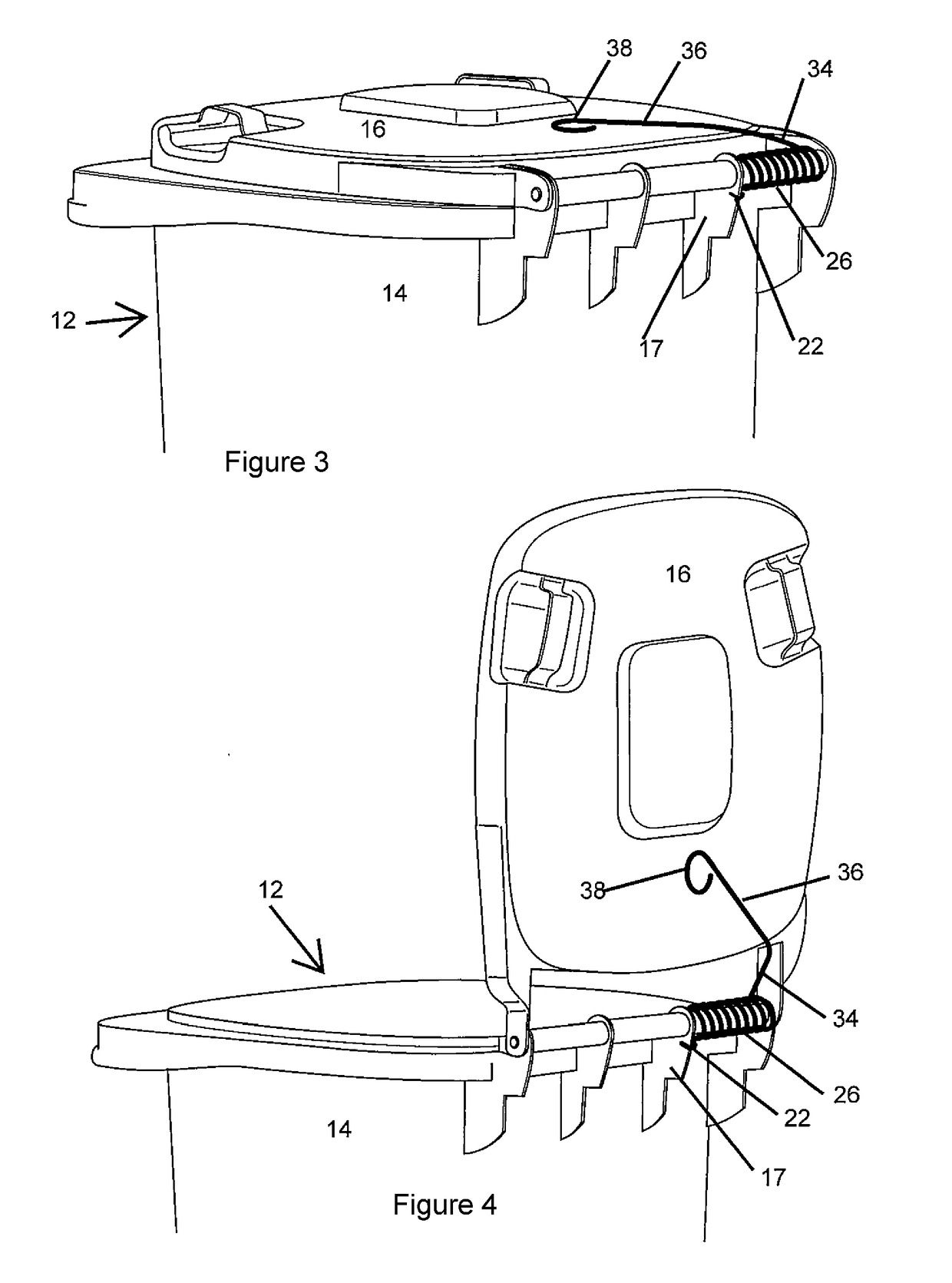Bin lid closing device
a lid closing and bin lid technology, applied in the field of bin lid closing devices, can solve the problems of blown open bins at windy sites, such as coastal or valley sites, and unwanted odours in bins that are more noticeable, and can spread disease or rubbish around the local environment,
- Summary
- Abstract
- Description
- Claims
- Application Information
AI Technical Summary
Benefits of technology
Problems solved by technology
Method used
Image
Examples
Embodiment Construction
[0060]Referring initially to FIGS. 1 to 4, there is shown a first embodiment of a bin lid closing device 10 for use on a bin 12 of known type, an example of which is often referred to as a ‘wheelie’ bin. However, it should be understood that the device 10 is suitable for use with any type of bin that has a lid hingedly attached thereto. The bin 12 comprises a body 14 formed generally from four side walls, defining a receptacle which typically holds rubbish and / or recyclables; and a lid 16. A cylindrical handle 18 is provided adjacent an upper end of a rear side wall of the bin 12. In the embodiment shown in FIGS. 3 and 4, the cylindrical handle 18 extends substantially along the length of the upper end of the rear side wall. The handle 18 is divided into substantially equal portions, each divided by a rib or fin 17, which extends outwardly substantially perpendicularly from the rear side wall of the bin 12 and has a portion that encircles the handle 18. The lid 16 is pivotally secur...
PUM
 Login to View More
Login to View More Abstract
Description
Claims
Application Information
 Login to View More
Login to View More - R&D
- Intellectual Property
- Life Sciences
- Materials
- Tech Scout
- Unparalleled Data Quality
- Higher Quality Content
- 60% Fewer Hallucinations
Browse by: Latest US Patents, China's latest patents, Technical Efficacy Thesaurus, Application Domain, Technology Topic, Popular Technical Reports.
© 2025 PatSnap. All rights reserved.Legal|Privacy policy|Modern Slavery Act Transparency Statement|Sitemap|About US| Contact US: help@patsnap.com



